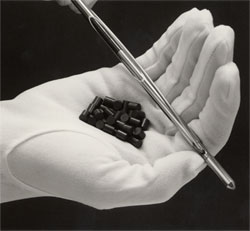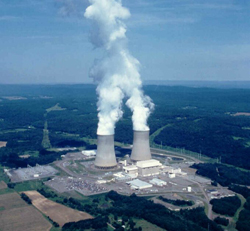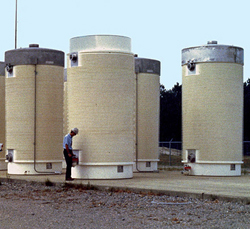The Nuclear Fuel Cycle
The process of moving fuel from the mining stage, through production of energy, and to waste disposal is called the nuclear fuel cycle. Notice that it’s during the back end stage when the main issues arise of dealing with radioactive materials.
 |
Front end stage: The first part of this stage is mining the uranium ore. Also included in the front end stage is the enriching of the uranium and the conversion of it into fuel pellets, like those you see here. In the last part of the front end stage, the fuel pellets are enclosed in the fuel assembly rods and taken to the nuclear power plant. |
 |
Service stage: It begins when the fuel assemblies are placed in the reactor core and used in the fission process. It includes all of the time during which the fuel assemblies are used to generate electricity. |
 |
Back end stage: This stage deals with transporting, reprocessing, and disposing of spent fuel. Later, the spent fuel can be stored in a dry cask storage facility, shown in the picture here. These concrete and steel cylinders are bolted closed and are (ideally) leak-proof. If spent fuel has to be transported, it is shipped in a spent fuel shipping cask. Like a storage cask, the shipping cask is designed to prevent escape of radiation into the environment. |